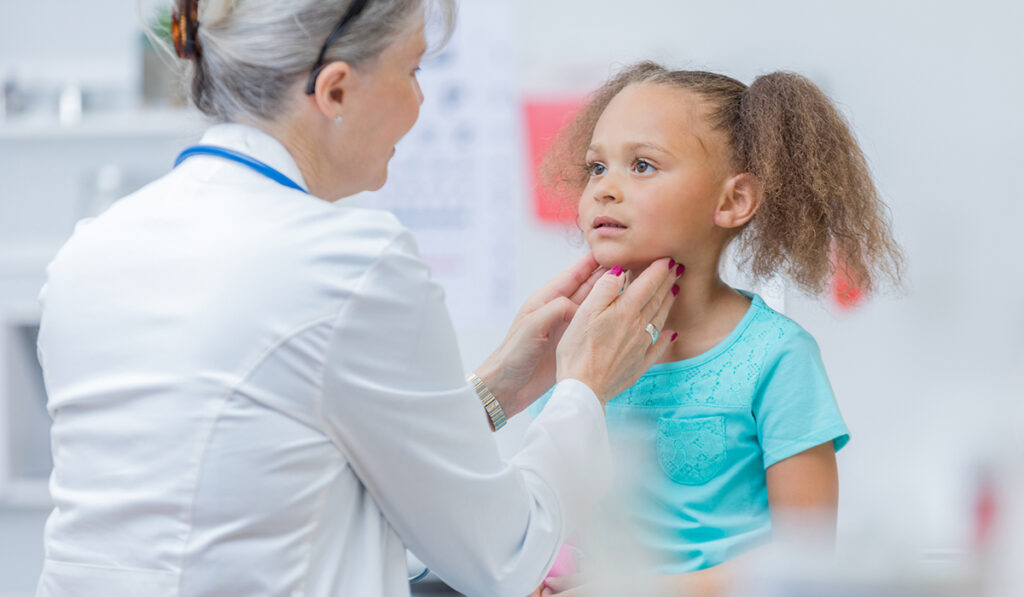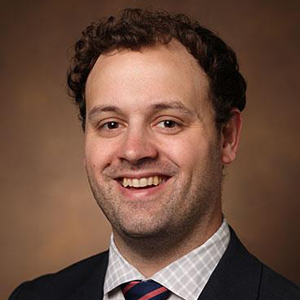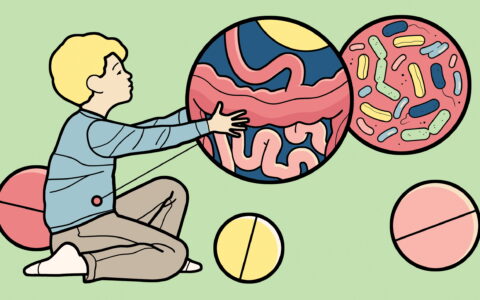Researchers at Monroe Carell Jr. Children’s Hospital at Vanderbilt have developed a probe technology using near-infrared autofluorescence (NIRAF) that helps identify and preserve parathyroid glands during pediatric endocrine surgery.
Damage or removal of calcium-regulating parathyroids during endocrine surgery is especially damaging for children because it can put them at risk for poor growth and slow mental development. Yet, preserving this tiny organ is not easy. The rice-sized glands are hard to detect with the naked eye, even for a seasoned surgeon.
As reported in the journal The Laryngoscope, the gland-saving technology comes more than a decade after Vanderbilt researchers first discovered that NIRAF was effective in identifying parathyroids during endocrine surgery in adults. The team went on to develop a probe technology, PTeye, that later earned FDA approval.
“This device helps identify and ultimately can help preserve the parathyroid during the surgery.”
The ability to protect parathyroids in children was a natural next step.
“Damaging the parathyroid during surgery can be very detrimental for children; they can end up being on calcium supplementation for the rest of their lives,” said Ryan Belcher, M.D., M.P.H., an assistant professor of otolaryngology–head and neck surgery at Vanderbilt. “This device helps identify and ultimately can help preserve the parathyroid during the surgery in children.”
Belcher led study with co-investigator Anita Mahadevan-Jansen, Ph.D., the Orrin H. Ingram Chair in Biomedical Engineering at Vanderbilt.
Locating Tiny Tissue
The human body has four parathyroid glands arranged in two pairs within the neck. Sitting adjacent to the thyroid, parathyroids produce hormones that regulate blood calcium levels to support heart, nervous system, kidney and bone function.
Because identifying the location of parathyroid tissue in children’s necks is especially difficult, post-surgical rates of hypocalcemia are high for pediatric patients undergoing thyroidectomy. The damage typically occurs from unintentional injury or excision of the glands during surgery.
“Nearly every child in our study returned to normal parathyroid hormone levels after surgery.”
The study enrolled 19 children between the ages of 6 and 16 years who had undergone endocrine surgery – thyroidectomy or parathyroidectomy – between 2019 and 2022. The probe accurately detected the parathyroid gland 95.8 percent of the time, with 46 out of 48 parathyroids correctly identified.
“Nearly every child in our study returned to normal parathyroid hormone levels after surgery,” Belcher said.
Developing the Device
The study builds on work at Vanderbilt that began in 2008, when then-general surgery resident Lisa White, M.D., noted the difficulty of locating the parathyroid gland during endocrine surgery.
White discussed the issue with Mahadevan-Jansen, who studies the use of light-based technologies for biomedical applications, to see if her research could be applied to the problem.
Mahadevan-Jansen and team determined that parathyroid glands exhibit a higher degree of near-infrared autofluorescence than adjacent neck tissues, which led to development of PTeye, a hand-held, probe-based device that provides real-time guidance in identifying the parathyroid gland during surgery through audio signals and visual displays.
“We have experienced surgeons and researchers on the cutting-edge of medicine, along with a dedicated team across surgery, radiology, pathology and endocrinology, all with the goal of improving outcomes for children and advancing the care we deliver,” Belcher said.





